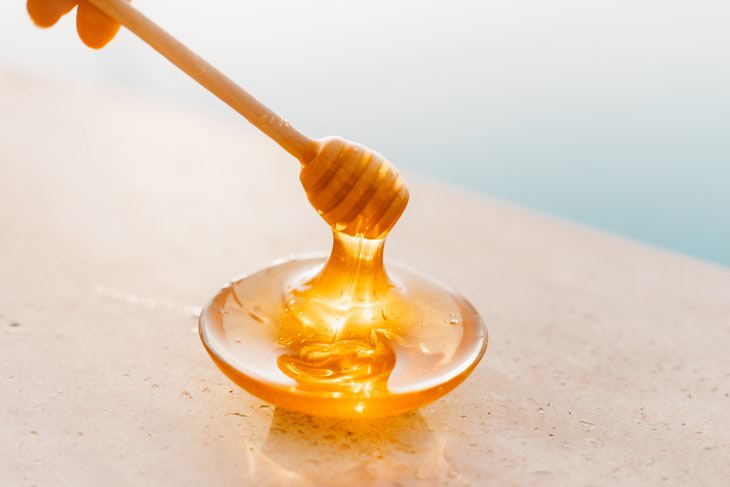Myth 1. Hypoallergenic cat and dog breeds won’t trigger any symptoms.
Wanting a pet despite having an allergy is understandable, and if you don’t have a severe allergy, it is possible. Pet breeders may lead you to believe that adopting a so-called hypoallergenic pet breed will solve all your problems, but it’s safer to exercise caution, especially if you’re severely allergic.
Doctors know pet allergies are triggered by specific proteins present in the pets’ saliva, sweat, dander, and urine. Hypoallergenic dogs and cats like poodles, Portuguese water dogs, Siamese cats, and Sphynxes produce less dander or have fewer of these allergy-causing proteins, so they could possibly be a better choice for allergy sufferers. But even they could trigger allergy symptoms, so you’ll need to adopt a clear set of rules on handling your pet and cleaning your home to prevent allergy flareups.
Myth 2. Food allergies are the same as food intolerances.
If you feel icky in your stomach a few hours after eating chocolate or bread, you may interpret this as a food allergy. But technically speaking, the described symptoms better fit the definition of food intolerance. Unlike an allergy, which is an immune response, intolerances usually involve the digestive system.
The classic example of food intolerance is lactose intolerance, where a person experiences bloating, indigestion, or diarrhea after consuming dairy. The symptoms of food intolerance are not as dangerous and take longer to develop than a true food allergy. The latter can show up within minutes after accidentally ingesting the food and could be life-threatening. For example, a severe peanut allergy can result in the swelling of the throat and narrowing of the lungs called anaphylaxis - a medical emergency.
Myth 3. Living in a desert climate means you’ll have fewer allergies.
Since the common culprit behind seasonal allergies is pollen, some people believe that living in a desert climate can either reduce their symptoms or prevent them from getting allergies altogether. Research suggests that the types of allergies people tend to get can be predetermined by their environment, but every region has roughly the same amount of allergy sufferers.
"The percentage of people who have allergies doesn't change from one region of the country to another; what differs is what people are allergic to," stated Dr. Darryl Zeldin to the AARP. This means that a person will most likely develop some allergy if he or she is genetically predisposed to allergies.
As for those who consider moving to a desert climate to escape allergies, it’s largely a counterproductive attempt because grass and ragweed pollen are found even there.
Myth 4. Only kids can develop allergies.
Many allergy myths are related to age. The fact that most allergies are diagnosed at an early age makes many people believe that adults cannot develop allergies. This is true for any kind of allergy - seasonal allergies, food allergies, or pet allergies.
A study by The American College of Allergy, Asthma, and Immunology (ACAAI) on food allergies found that nearly half of the participants developed the allergy in adulthood. The majority of these adult cases are seen in people in their 20s or 30s, but allergists see older adults who develop allergies in their 80s too.
Myth 5. Allergy medication is the only way you can reduce symptoms.
Since there is no known cure for allergies, the best way to avoid allergic reactions is to know your triggers and stay away from them. This is easier for people allergic to certain foods or animals. Those suffering from hay fever all spring and summer due to pollen or those who are allergic to dust and mold, on the other hand, got the short end of the stick because their triggers are virtually everywhere. For this reason, seasonal allergy sufferers usually relieve their symptoms with the help of nasal sprays, eye drops, and antihistamine pills.
But there is one more option fewer people are aware of - allergy immunotherapy. According to the ACAAI, “immunotherapy involves giving gradually increasing doses of the substance, or allergen, to which the person is allergic.” The dose of the allergen is gradually increased with every injection, and the person becomes less sensitive to the allergen over time. Depending on your specific allergy and body, this can reduce your allergy symptoms almost completely and permanently over time.
Myth 6. Small kids shouldn’t eat commonly allergenic foods or play with pets.
This myth is not only untrue, it could be dangerous. New studies actually show that the exposure of kids younger than a year old to allergenic foods, namely tree nuts, and eggs, can actually reduce their risk of developing a food allergy. The same is true about pet allergies, with studies suggesting that children raised in homes with pets have a reduced risk of suffering from pet allergies.
Of course, this doesn’t work if you already know that a child has a pet or food allergy - no amount of exposure will be able to cure an already existing allergy or make a child “grow out” of an allergy.
Myth 7. Mattress covers will reduce your dust allergy symptoms.
Dust allergies are caused by dust mites - tiny bugs that feed on pet dander and human skin and live on our beds, couches, carpets, and other textiles. Mattress and pillow covers are often advised as a way to reduce allergy and asthma symptoms, but the research on this topic is conflicting.
A review study from 2014 suggests that mattress covers make no significant difference in allergy symptoms like asthma attacks, wheezing, and a runny nose because the mattress covers didn’t reduce the number of dust mites enough for the participants to feel a difference in their symptoms.
If you’re already using mattress and pillow covers, though, no need to get rid of them - some allergists still believe that using and washing them every month may actually help your symptoms.
Myth 8. Adding local honey to your diet relieves allergies.
Honey is delicious and nutritious, but it doesn’t do anything for your seasonal allergies. According to anecdotal evidence, eating honey from a local beehive can desensitize your immune system to pollen, just because bees make honey from flower pollen. This idea was tested experimentally in a 2013 study. In the study, one group of patients was given local honey and the controls ate corn syrup.
The researchers didn’t find any difference between the two groups, and overall, allergy symptoms persisted in all participants. If you’re allergic to pollen, eating honey can actually be a bad idea. Although very rare, some people can develop a severe allergic reaction after eating raw, unpasteurized honey.
Myth 9. Flowers commonly trigger allergies.
This myth is connected to the previous one. Few people know this, but flower pollen is actually a very rare allergen, which is why most people won’t experience any adverse reactions if they smell a bouquet of flowers. Bees also usually make honey from flower pollen, which is why allergic reactions to honey are quite rare. Which pollens are the culprits behind most spring allergies, then? Trees, grasses, and weeds are the most common triggers of allergies. Plants like ragweed, tumbleweed, sagebrush, pigweed, birch trees, cedar, and oak all produce allergenic pollen.
Myth 10. It’s possible to outgrow allergies.
This is another myth that’s just not true. If you have an allergy, it will most likely persist all your life. That said, your immune response to allergens will decline with age. This is why people over age 60 usually experience less severe symptoms of hay fever or food allergies. Doctors explain that this happens because our immune systems tend to become weaker over time.
Share this information with family and friends!
 Go to BabaMail
Go to BabaMail































































